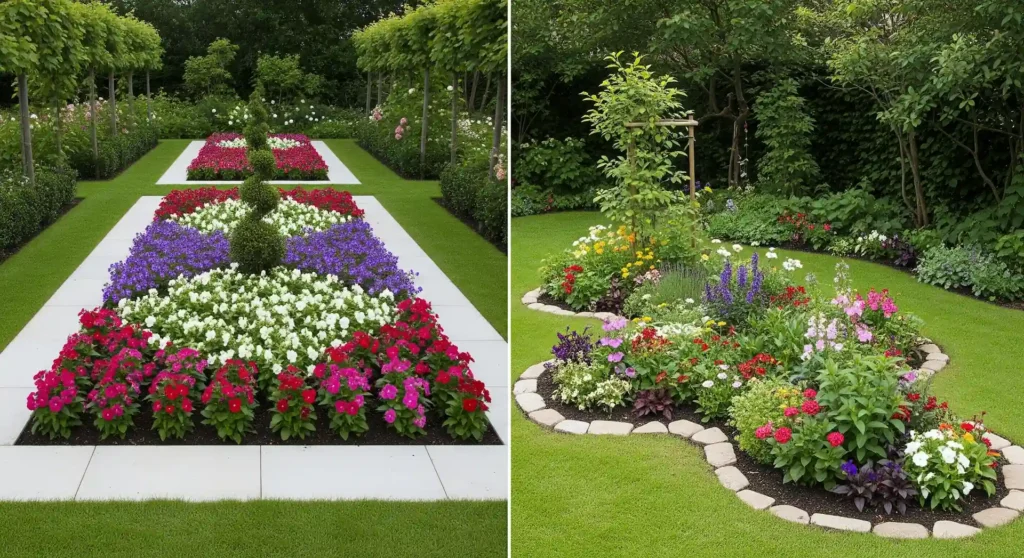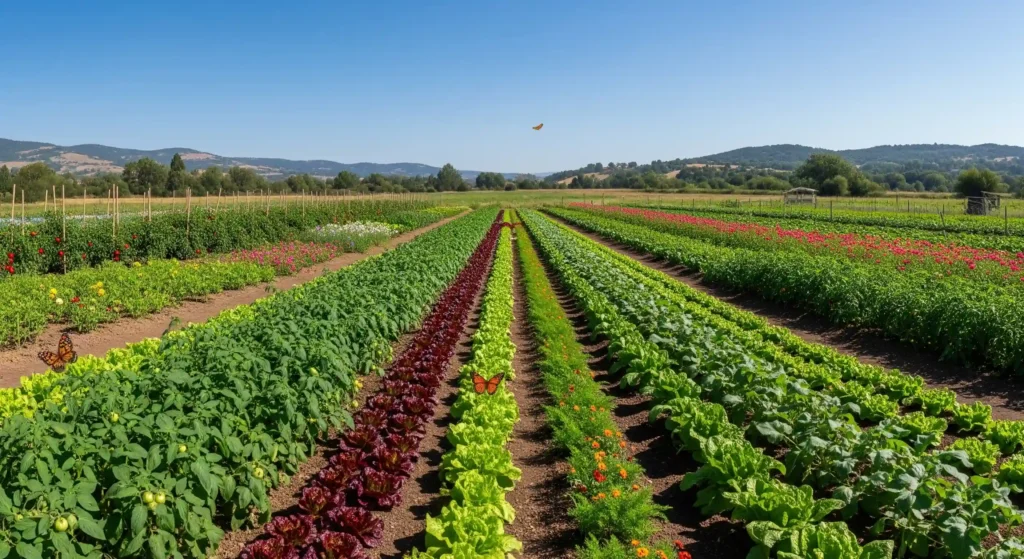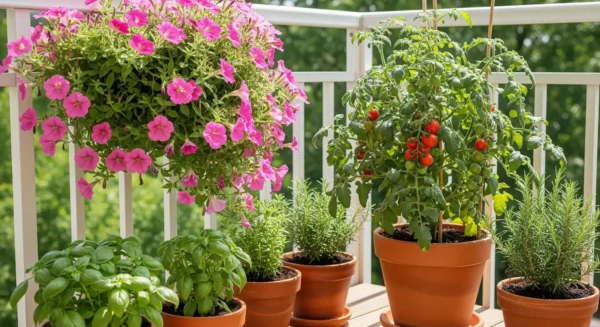Raised Bed vs. In-Ground: The Complete Guide to Release the Potential of Your Garden
Oh, the charming conundrum! Whether you’re a seasoned master trying to expand your green kingdom or you’re just dipping your toes into the amazing world of gardening, you have probably asked the basic question that dictates your whole growing path: raised bed vs. in-ground? It’s like deciding between a sleek, modern design and a classic farmhouse kitchen; both are great, but which one really fits your style, your space, and your gardening aspirations? The truth is that neither approach has a single “best” response as each have particular benefits and a few drawbacks. But you need not worry! This complete guide is here to sort the subtleties, break out the pros and negatives, and provide all the information you need to boldly decide on the best course of action and really release the potential of your garden. So let’s start exploring!
Selecting Your Garden Layout: An In-Depth Comparison
Here, in a sense, the rubber hits the road! Choosing the plan of your garden depends on knowing what each technique shines at, whether you dig in or build up. To help you determine which of the main elements in this raised bed against in-ground comparison best fit your gardening goals, let’s dissect them.
Control of Soil Quality and Characteristics
Raised Beds: This is maybe where raised beds really shine. Building a raised bed lets you become the lord of your soil! To guarantee perfect fertility and texture from right away, you load it with a bespoke mix of premium topsoil, compost, and other additions. Perfect drainage, rich nutrients, and no concerns about already existing rocky, compacted, or contaminated native soil follow from this. It’s like creating from nothing a flawless growing environment.
In-Ground: Working with your natural soil, in-ground gardening allows you. If you have naturally good soil, this can be quite a benefit; nevertheless, it also involves confronting any current difficulties head-on. While sandy soil drains too rapidly, heavy clay can cause compaction and inadequate drainage. Though it’s a long-term endeavor, improving current soil is definitely doable with steady inputs of organic matter.
Water Management and Drainage
Raised Beds: Thanks to that specific, generally lighter, soil mix, raised beds provide excellent drainage. For plants that hate “wet feet,” this is great; it also helps avoid frequent problems including root rot. But this great drainage also means they dry out faster than in-ground beds, particularly in hot, sunny climes, maybe calling for more frequent watering.
In-Ground: Particularly in clay soils, existing soil in in-ground beds often holds moisture more reliably. Although this helps water retention, if your soil is compacted or poorly drained it may cause waterlogging. Conversely, sandy soils could drain too quickly and call for more regular irrigation.
Control of Pest and Weed Problems
Raised Beds: Raised beds’ enclosed soil and elevated character help to greatly lower weed pressure. You start ahead of the game when you load them with weed-free soil! Hardware cloth is also easier to attach at the bottom to discourage burrowing critters like gophers and voles; it provides a natural barrier against some ground-crawling pests.
In-Ground: Unfortunately, weeds are more common in conventional in-ground beds and usually call for more frequent weeding visits. Given their shared vast soil network, soil-borne diseases and pests can very readily move across plants.
Accessibility and Ergonomics
Raised Beds: My back really thanks you for those raised beds! The higher height makes gardening chores including planting, weeding, and harvesting far more pleasant, therefore lowering the demand for too much bending and kneeling. For those with mobility problems, bad backs, or just those who want a less demanding experience, gardening is therefore lot more accessible. For comfortable gardening, it really is a revolution.

In-Ground: Traditional in-ground beds naturally call for more bending, kneeling, and reaching, which some gardeners find difficult or uncomfortable—especially as they get older or if they have physical restrictions.
Cost and Construction
Raised Beds: Let’s talk about budgets now raised beds. Although the long-term advantages are enormous, raised beds usually ask for a larger starting cost. You will need to buy materials for the frame—wood, stone, composite, metal—then a lot of fresh, premium soil to fill it.

In-Ground: Generally speaking, the initial setup cost for an in-ground garden is far less. Mostly, you are working with labor: tilling, adjusting your current soil, and digging. Here, the primary “cost” would be in gradually repairing poor soil.
Design Flexibility and Aesthetics
Raised Beds: Raised beds provide neat lines and a defined, typically more formal, look that may wonderfully arrange a garden area. Their great architectural versatility lets you build different zones, paths, and even smooth integration of them into patios or even rooftops. They seem really clean and orderly.

In-Ground: In-ground beds mix perfectly with the surrounding terrain and have a more natural, spreading appearance. Their open-ended design allows for organic forms and large planting spaces that seem quite connected with the surroundings.
Regulation of Temperature
Raised Beds: Raised beds often warm up more rapidly in the spring since they are exposed on all sides. For an early start on your planting season—especially in chilly climates—this might be quite helpful. In high summer, this also means they might dry out more rapidly and heat up faster.
In-Ground: Usually, in-ground dirt has more consistent soil temperatures. Although it takes more time to warm up in the spring, it stays warmer later into the fall, thereby prolonging your growing season somewhat on the back end. This stability can help to maintain root health.
Deep Dive: The Advantages of In-Ground Gardening
Although raised beds have lately attracted a lot of attention, let’s not overlook the classic benefits of conventional in-ground gardening. Gardeners have been working this way for millennia for a reason!
Starting first, there is the natural integration. An in-ground garden simply fits very nicely with the surroundings. It seems natural, flowing, and in line with the surroundings. In-ground beds are great whether your garden’s look is more casual and rambling or if you just want it to feel like an extension of the surrounding landscape.
Naturally, then, is the reduced starting cost. For many inexperienced gardeners, the concept of purchasing cubic yards of soil and building frameworks might be costly and intimidating. Starting in-ground gardens frequently calls for little financial outlay; your main investment is usually your own time and effort in soil preparation. This makes gardening’s entry point quite easy.
The infinite space is maybe the most unsaid advantage. An in-ground bed offers no structural limitations. You just keep digging if you wish to enlarge your tomato patch or unexpectedly find you need a spreading pumpkin vine! This independence from limitations lets one plant extensively and grow large-scale crops that would seem limited in a raised bed.

Furthermore generally steady soil temperatures are found in in-ground soil. Raised beds cool rapidly but can warm up rapidly. The earth’s great thermal mass helps to balance temperature swings, therefore the roots of your plants live in a more constant environment that can help to lower stress during heat waves or unexpected cold snaps.
Less watering can also be a genuine benefit at last. Usually including a fair quantity of organic matter, established in-ground beds usually hold moisture significantly better than more exposed, fast-draining raised beds. This can mean less regular irrigation, particularly in hot, dry areas. Sometimes, though, you simply cannot match that sensation of planting right into the ground. It really helps you to relate to the inherent growing cycle.
Building Up: The Appeal of Raised Garden Beds
Let us now discuss the reasons for the phenomena of raised beds in the gardening scene. Particularly for individuals with particular difficulties or seeking ideal control, they present a range of convincing benefits and provide answers to many typical gardening problems.
Many find the better soil quality and drainage you can get to be the most appealing feature. Imagine this: you get to fill your raised bed with a precisely designed mix of nutrient-rich topsoil, fluffy compost, and maybe some vermiculite for drainage instead of fighting compacted clay or infertile sand. This means from day one your plants have ideal growing circumstances, which results in better harvests and more robust development. Moreover, that great drainage almost solves concerns about wet roots, a common death sentence for many garden plants.
A further major advantage is the longer growing season. A raised bed’s higher ground warms up sooner in the spring since it is exposed to the air. For enthusiastic gardeners, this can be a game-changer since it lets you sow delicate crops early and maybe stretch your harvest well into the fall. Your microclimate is essentially giving your plants a head start and extended life!
Raised beds cut weeds and pests for people bored with constant weeding. Starting with a weed-free soil mix and maybe adding a barrier at the bottom greatly reduces the likelihood of opportunistic weeds developing. The enclosed nature also provides a safer refuge for your plants by physically blocking numerous ground-crawlable pests. It is really a more regulated surroundings.
Then there is the quite crucial element of better accessibility. Gardeners of all ages and physical ability will find great benefit from this. A raised bed’s enhanced height reduces much the bending, kneeling, and stooping required. It makes gardening from a maybe unpleasant task a pleasant, interesting hobby. For your back and your knees, it truly is revolutionary!
Ultimately, from a design perspective, elevated beds provide improved organization and appearance. They lend your landscape structure and order by carefully delineated, neat garden areas. You can arrange them for vertical planting using fascinating materials, simple lines, and even stacks. This makes including gardening into smaller yards or even on hard surfaces like patios and roads simple. For poor soil, this also makes them an amazing fix. A raised bed lets you completely avoid all those issues whether your native soil is rocky, extremely compacted, even maybe tainted from past land use by providing a clean, ideal growing medium.
Choosing a Garden Bed: The Right Fit for YOUR Situation
Alright, you have the whole picture on the amazing elements of in-ground gardens and raised beds. The interesting aspect is now choosing the one that fits your particular circumstance exactly. Here there is simply the best fit for your particular situation; no right or wrong response exists. Let’s tour some important factors to help you decide.
Think first of your gardening objectives. In a limited area, are you seeking highest yield? Maybe elevated beds with heavy planting would help. Do you like a natural, expansive view with plenty of crops? One could consider in-ground as perfect. Is one of the main concerns accessibility? Surely raised beds will be successful there. Regarding appearances, what is it? Do you like a more wild, organic vibe or tidy, defined lines?
Examine your site next. You have what kind of natural soil? In-ground is a great, reasonably priced choice if it is rich, loamy, well-drained. But building up might save years of effort if you’re fighting contaminated soil, sand, or tough clay. What sun exposure does the location you selected get? Both kinds require lots of sunlight, but for cool locations, raised beds warm up quickly. What is the local temperature like? If your growing season is limited, a raised bed could provide a vital head start.
At last review your tools. Your starting budget is what? Generally speaking, raised beds cost more initially for soil and supplies. Realistically, how much time and physical effort can you devote to gardening? Reduced weeding and simpler access of raised beds could be quite helpful if you’re pressed for time or physical mobility is a problem.
Go for a Raised Bed if…
- You have bad native soil—rocky, compacted, polluted clay.
- You want less physical effort and better access when working in the garden.
- You desire exact control over your drainage and soil mix.
- You want a neat, orderly, and visually delineated garden.
- You wish to let soil warm up sooner in spring so extending your growing season.
- You value improved pest control and less weeding.
- You are tending to a patio, rooftop, or other hard surface garden.
Use In-Ground if…
- You wish to cut early expenses and have a limited budget.
- Your native soil is quite naturally healthy and well-draining.
- You desire to build wide-ranging, flowing garden designs or plant vast crops from your sizable territory.
- Your landscape should look more naturally integrated.
- You wish to benefit from the more constant soil temperatures the mass of the earth provides.
- You’re ready for consistent weed control and more physical work—bending, kneeling.
And keep in mind that many gardeners combine both techniques really successfully! Indeed, sometimes you wish for the best of both worlds. You might have included bigger, in-ground ornamental beds further out in the yard after raising beds for your vegetables near the house for easy access and excellent soil. The freedom of flexibility is absolutely liberating!
Finally, Tending Your Best Garden Ever!
We have therefore explored every layer of this fundamental gardening choice, navigating the famous raised bed against in-ground argument. The one lesson that stands is nobody has one “winner” that fits them exactly. Both approaches provide great chances to interact with the surroundings, produce delectable food, and create beauty in your outdoor area. The “right” decision is finally the one that fits your particular demands, available means, and personal gardening vision.
Recall that the real test of success in gardening is not about deciding one flawless technique over another. It’s about knowing your surroundings, modifying your strategy, and most importantly—finding delight in the process. Whether you choose to embrace the expanse of in-ground planting or build up your soil in neat raised beds, you are starting a fulfilling path of development, knowledge, and relationship with the earth. Indeed, the real delight of gardening is in the growing, learning, and relationship with nature—would you agree? Good gardening, friend; whichever of the road you decide upon!
Frequently Asked Questions
What materials should raised beds be built from?
Common and sturdy materials are gorgeous naturally rot-resistant cedar or redwood. For a modern look, also consider composite timber, stone, concrete blocks, or even galvanized metal troughs. Avoid treated lumber from before 2003; it may have chemicals inappropriate for vegetable gardens.
How deep should a raised garden bed be?
Generally speaking, most veggies call for a depth of at least 10 to 12 inches. This guarantees proper drainage and lets enough space for root development. Aiming for 18 to 24 inches will provide your root crops—carrots, potatoes, or long radishes—enough of room to stretch out and flourish.
Should a raised bed have a barrier at the bottom, then?
Usually, it’s a really great concept! A layer of heavy-duty mesh, not flimsy chicken wire, at the bottom is strongly advised to discourage burrowing pests (such as gophers or voles), should you be building directly on grass or an area where they are a worry. As a weed barrier, landscape cloth can also help to stop current weeds from spreading into your fresh, clean soil.
Can I cultivate anything from the ground using a raised bed?
Indeed, raised beds are quite flexible most of the time! In a raised bed you might grow practically any food, herb, or flower from the ground. Extremely huge, spreading plants like some varieties of pumpkins or corn, which would just profit from the infinite horizontal area of an in-ground bed, would be the main exceptions.
How can I create a raised bed from an existing in-ground garden?
This is a really interesting query. An existing in-ground bed is entirely convertible. The easiest approach is to create a raised bed structure just around your present garden area. Once the frame is in place, leave your previous soil as the base and fill the new bed with your own custom soil mix. This approach can help you save some money on the fresh dirt you will need to cover the whole depth of the bed.









